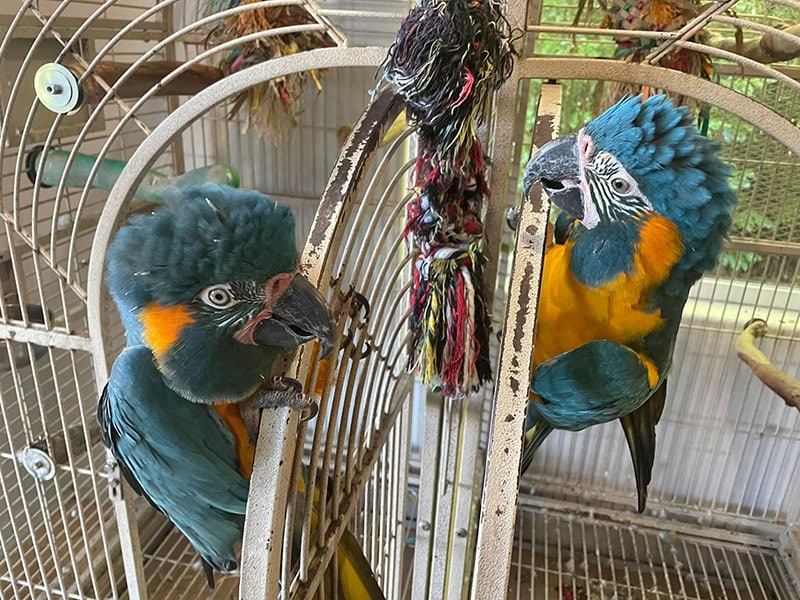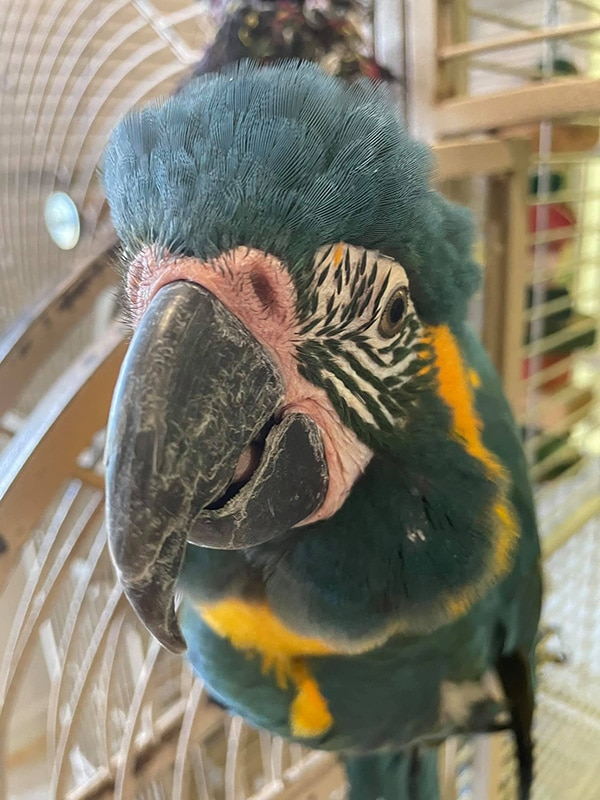About the Birds
The blue-throated macaw (Ara glaucogularis), also known as the Caninde macaw or Wagler’s macaw, is a macaw endemic to a small area of north-central Bolivia, known as Los Llanos de Moxos. It is a critically endangered species, with an estimated population of only 208–303 individuals remaining in the wild.
Blue-throated macaws are about 85 cm (33 in) long including the length of their tail feathers and have a wingspan of approximately three feet or 90 cm. They weigh about 900 g (32 oz) to 1,100 g (39 oz). Males tend to be a little bigger than females with approximate masses of 750 g and 950 g respectively. Upperparts are turquoise-blue, slightly duller on crown and brighter on rump. Underparts largely bright yellow but the vent is pale blue.
Their diet consists mainly of fruits, nuts, and seeds. They also eat insects and other small animals.
Blue-throated macaws are cavity nesters and typically lay 2-3 eggs. The eggs hatch after about 26 days and the young fledge after about 50 days.
Blue-throated macaws are threatened by habitat loss and the illegal pet trade. Their habitat is being cleared for agriculture and cattle ranching. They are also captured for the pet trade, despite being protected by Bolivian law. With continued conservation efforts, it is hoped that the blue-throated macaw can be saved from extinction.










